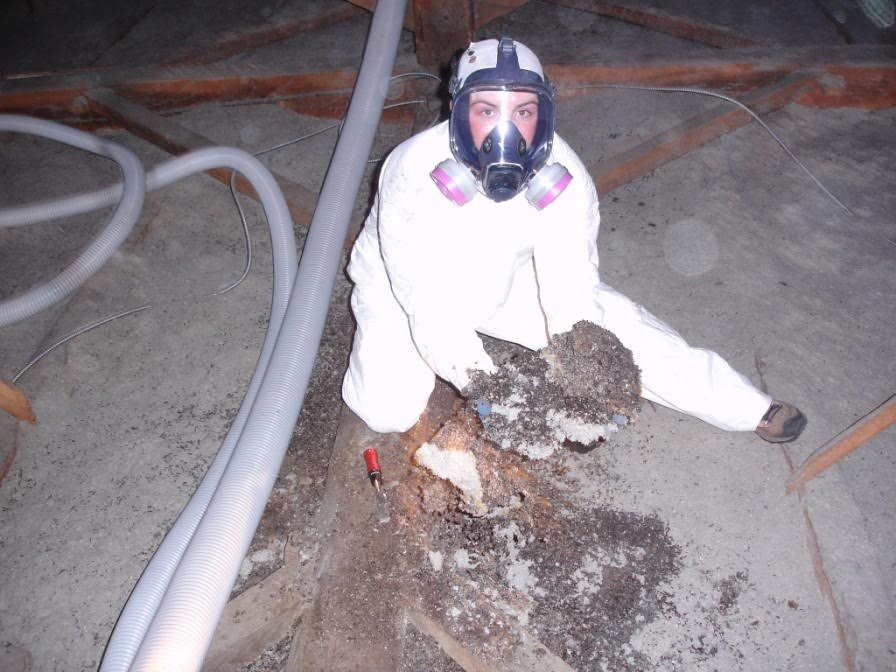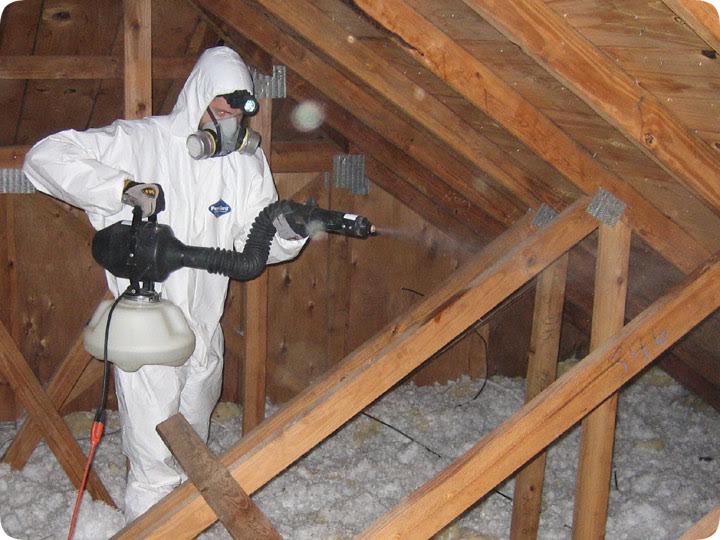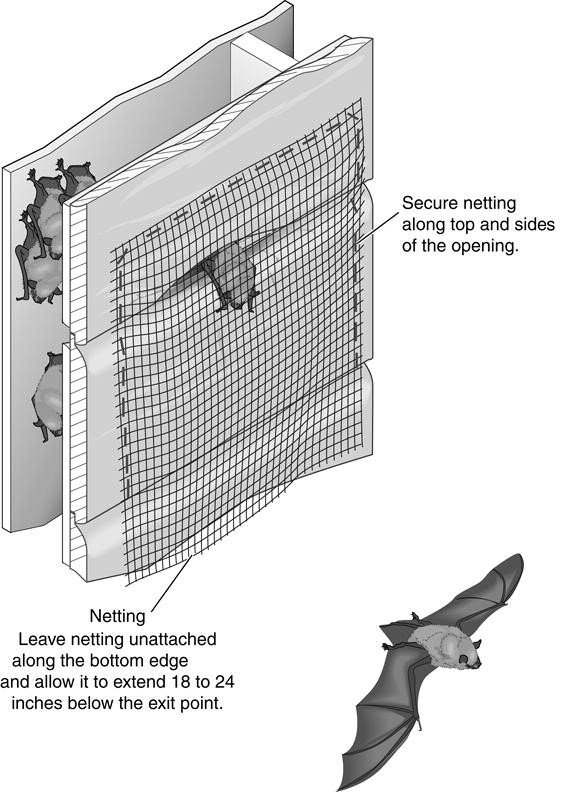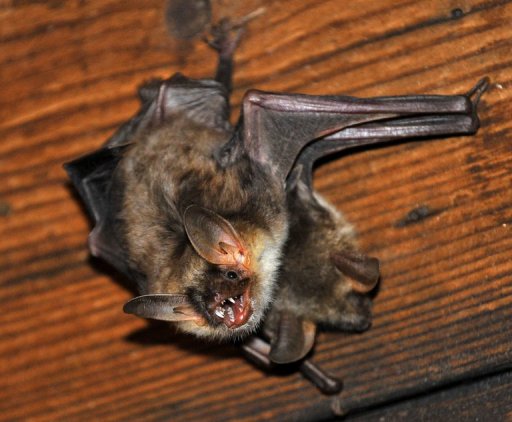
Hi my name is Brendan Mangnitz, I have been in the Nuisance Wildlife Removal industry now for nearly 6 years since I graduated from College at UF with a background in Entomology and Wildlife Biology. I have seen and controlled just about any wildlife issue you may think of. I have dealt with Bats in apartments complex, Bat Removal from your everyday house hold, bats in the attic, bats in columns, bats in pool enclosures, bats stuck in chimney’s, and the list goes on and on. I have used several different control and removal methods for bats and that’s what I want to share with you guys on our website here at 247wildlifecontrol.com.
The first topic to address, is why are we having this problem with bats at our home or in our attic? Well the answer is actually a lot simpler than you would think, it was the bats land first, they were here before we were. Bats are wild animals, they are used to living around trees, forests, bushes, shrubs etc. But as we have populated and continued to grow we have moved into their setting. We have taken away the bat’s natural habitat and replaced it with homes, HOA’s, apartment complexes, malls, just regular growth and construction. Well, by doing this we have created a hand full of OPTIMAL settings for bats and nuisance wildlife. As humans we create garbage, mess, waste and all of this creates additional food for bats. So now you take their natural setting of a forest, replace it with homes, and then add food. Well what do you think the bats are going to do? THRIVE! And that is what they are doing, we are providing the bats with an abundant amount of food, our trash, and we are desensitizing them, meaning they no longer have to hunt and be resourceful to eat and stay alive, but just the opposite. All they have to do is knock over our trash cans and buffet!
Well now let’s talk about why the bats are getting into your attic. It’s simple, the attic is a PERFECT place for the bats to create a shelter. It’s hot, it’s nice and comfy with the insulation, there are no outside elements like rain or wind, so they are protected and best of all, there are no predators or enemies. If I was a bat I would rather live in an attic than a tree! So you take the perfect conditions of your attic as a shelter, then you add your trash cans right on the outside of the home, and you just gave the bat all the things that they want to live. Why would they ever want to leave your residence? Free rent, free buffet, cozy bed, and that’s why you have bats in your attic or rummaging around your lawn and home.

10 Simple Steps for Effective Bat Removal & Control
The first step is to Identify that you do indeed have a problem. Is your yard being torn up by bats? Are you hearing REALLY really loud noises in the attic? Are your trash cans being knocked over every night and trash spread out all over your yard? Well if you have these signs of a bat infestation then keep reading. What I normally like to do and tell my customers when they suspect that they are dealing with a nuisance bat is document it. So make sure it is a bat, since all animals’ removal method is different.
Check the property and roofline: Do you see feces: Bat Poop is called Guano. Are you seeing bat poop like this in your yard, stuck to the side of your house or in your pool? Are you seeing bat grease marks on the soffit, on the walls, or leading to the attic?
Confirm the activity on the exterior is indeed bats. The next step that you are going to want to take is to see if they have made it into the attic or not. You will not always hear bats in the attic. They can be agile, they can be quiet, and bats in the attic are not always loud. What you want to do is get into the attic and perform an inspection. Anytime you think that you have animals in the attic, especially bats in the attic, you want to be 100% careful and safe. If you do not feel safe or do not want to take the chance call me, Brendan Mangnitz, and I can talk to you over the phone and even do an inspection for you or send you one of my inspectors to help out. I recommend hiring a bat removal specialist for safety reasons, but if you do want to do the inspection then continue reading?

Anytime that you enter an attic for bats there are a few things that you need to keep in mind. bats are dangerous, they are territorial, they are nasty and carry tons of bacteria, so you want to make sure you are prepared. Bat guano is one of the most bacteria infested feces that we deal with here on a regular basis, so you will want to make sure you wear a respirator like the one on the left. There are a few issues with bat feces that I will touch on to make sure you are protected, get it removed, and the attic and your home is contamination free.
Wild animals are known to carry many different zoonotic diseases, meaning they can be transmitted to humans. We will discuss each of those in detail. We are not intending to scare you by discussing the diseases associated with bats, but feel you should be informed of the health risk to you and your pets. The following is a list of some of the zoonotic diseases that you and your pets could be exposed to from wildlife in your attic.

Leptospirosis: The bacteria that causes leptospirosis is spread through the urine of infected animals, which can get into water or soil and can survive there for weeks and months. Many different kinds of wild and domestic animals carry the bacterium. These can include, but are not limited to cattle, pigs, horses, dogs, rodents, and wild animals.
When these animals are infected, they may have no symptoms of the disease.
Infected animals may continue to excrete the bacteria into the environment continuously or every once in a while for a few months up to several years.
Humans can become infected through: contact with urine (or other body fluids, except saliva) from infected animals or contact with water, soil, or food contaminated with the urine of infected animals.
* There have been cases this year in Florida of leptospirosis including at least 2 cases in Orlando.
Canine Distemper: Canine distemper is a viral disease that affects animals in the Canidae family (dogs, wolves, foxes, etc.), Mustelidae (ferrets, weasels, otters, etc.), Mephitidae (skunks), Hyaenidae (Hyenas), Ailuridae (the red panda), Procyonidae (racoons, ringtails, etc.), Pinnipedia (seals, walrus, sea lion, etc.), some Viverridae (racoon-like animals in South Asia) and Felidae (cats) (though not domestic cats; feline distemper or panleukopenia is a different virus exclusive to cats). The disease is highly contagious (via inhalation) and fatal 50% of the time, thus making it the leading cause of infectious disease death in dogs. The virus infects the gastrointestinal tract, respiratory tract, the brain, and spinal cord.
Common symptoms can include:
1) High fever,
2) Watery discharge from the eyes and nose,
3) Vomiting and diarrhea,
4) Hardening of the footpads and nose,
5) Seizures (of any part of the body, but seizures that look as if the dog is chewing gum are unique to distemper), and
6) Paralysis.
It is most commonly associated with domestic animals such as dogs and ferrets, although it can infect wild animals as well such as possums. It is a single-stranded RNA virus of the family paramyxovirus, and thus a close relative of measles and rinderpest. Despite extensive vaccination in many regions, it remains a major disease of dogs.
Hantavirus: Infection with hantavirus can progress to Hantavirus Pulmonary Syndrome (HPS), which can be fatal. People become infected through contact with hantavirus-infected rodents or their urine and droppings. Rodent control in and around the home remains the primary strategy for preventing hantavirus infection. All cases of Hantavirus infection are reported to the CDC.
Histoplasmosis: Histoplasmosis is an infection caused by breathing in spores of a fungus often found in bird and bat droppings. Histoplasmosis is most commonly transmitted when these spores become airborne, often during cleanup or demolition projects. Soil contaminated by bird or bat droppings also can transmit histoplasmosis, so farmers and landscapers are at a higher risk of the disease. In the United States, histoplasmosis most commonly occurs in the Mississippi and Ohio river valleys. Most people with histoplasmosis never develop symptoms and aren't aware they're infected. But for some people — primarily infants and those with compromised immune systems — histoplasmosis can be serious. Effective treatments are available for even the most severe forms of histoplasmosis.
Bat Roundworm: Baylisascaris infection is caused by a roundworm found in bats. This roundworm can infect people as well as a variety of other animals, including dogs. Human infections are rare, but can be severe if the parasites invade the eye (ocular larva migrans), organs (visceral larva migrans) or the brain (neural larva migrans). Rabies: Rabies is a preventable viral disease of mammals most often transmitted through the bite of a rabid animal. The vast majority of rabies cases reported to the Centers for Disease Control and Prevention (CDC) each year occur in wild animals like bats, skunks, bats, and foxes.
So with all these Diseases and Bacteria MAKE SURE YOU WEAR YOUR RESPIRATOR AND MAKE SURE YOU STAY PROTECTED AND REOMVE ALL THE BACTERIA POOP AND CONTAMINATION FROM YOUR ATTIC.

The next step once your lungs are protected you will want to make sure you were safety glasses and gloves. I ALSO strongly recommend that you take your phone into the attic with you or even a bluetooth speaker and you should blare some music. Bats in the attic will be afraid of all this noise. They will think that there is a party in your attic and will become afraid and want to hide or leave. This is what you want when you do an inspection, if you are doing an inspection of bats in the attic yourself you do not want to come in contact with a mother bat she may get defensive and you do not want to run the chance of her attacking you. So blare some music, have a disco in the attic, whatever, just make sure you make a lot of noise to scare the bat. Once you are certain the the bat is out of the attic, go ahead and take out your flashlight and do an inspection. Remember to walk on the beams in your attic, you don’t want to fall through the attic like my buddy James did when he was doing an inspection. Walk around the attic and look for the evidence of a bat infestation. Do you see bat poop? Do you see urine? Do you see bat trails? If you do, then you can confirm that you are having an issue with bats in the attic. If you do not see any of the signs, great! You caught the issue before it became a real big problem. What you are going to want to do is get ready for the steps below on how to trap and remove the bat from your attic, lawn or property. Next you will want to close off any of the openings on the home to prevent future bats from coming in. If you do not have them in the attic but just on the lawn you still want to close off these openings or access points otherwise it’s only a matter of time before the bat will want to explore and go into your attic. It’s always a good thing to be proactive and preventative when dealing with bats. The damage and destruction bats can cause can get into the thousands of dollars.

Ok so Next Step: Removal of the Bat: Valves or Nets work best! Setting up valves or nets is the best way to remove bats from the attic. You will also want to perform an ANIMAL EXCLUSION at the same time that you are installing the bat valves. So here is the concept on how to remove bats from your attic. First, you want to do the exclusion. This is when you completely close off any and all openings around the home that lead to the attic that are more than ¼ in in size. Below I will talk about exclusion work in more detail. Once all the areas on the exterior of the home are sealed you will now need to locate the bat roost. This is the area in which the bats are located in your attic. It is generally pretty easy to locate the bat colony. You should be able to see the area in which they are using in order to gain access to the attic. To identify the bat roost look for the grease rub marks, listen for the sounds, and look for the feces on the wall. Once this is identified you will very carefully want to install the bat valve. The bat valve or the bat netting will act as a one way door when properly installed. The concept is, it will allow the bats to leave the roost but not be able to get back in. You must be extremely careful when installing the bat valves for several reasons. Bats are the number one carrier for rabies. Bats teeth are so razor sharp you cannot always tell if they bit you. If you are putting the valve up you do not want to disturb the bats, if you end of scaring the bats they may want to leave. If the bats leave the roost and you are standing right by the exit point chances are they can brush up against you or even bitet you. But either way, their teeth are so razor sharp you will not be able to see if you have been bitten so you will be considered to have had a rabies encounter and will need to get tested. Rabies if untreated in enough time before symptoms become known is fatal. Secondly, if you install the bat valve or the bat net incorrectly the bats will not be able to escape. If the bats cannot escape you must be concerned that the bats will then try to make another way out. If you have already done the exclusion then chances are the bats will find a vent in the attic that leads into the house. If they find this vent they will try to use it to get out of the attic. The bats do not realize that the vent leads to your home. I have seen MANY cases where homeowners do not install valves correctly and the entire colony goes into the home. This is a huge headache. The entire family has to be tested for rabies, the rabies shots are not covered by insurance, they are put on a CDC rabies list, and worst part of all; it is a nightmare trying to get all the bats out! So I strongly recommend calling a professional when it comes to Bat Removal from the attic!

Live bat trapping and removal can take some time. I generally give it a total of two weeks for having the valve and nets up from start to finish until I know all the bats are gone. Normally bats travel in colonies or groups, so even if you see just one bat I would recommend keeping the bat traps out there for a extended period of time. Be patient, give it time and don’t mess with the valves. Let them sit there for a few days and try to catch the bat. Bait will normally stay good for about 72 hours depending on weather conditions, but remember bats are used to eating trash, so the bat will not be picky if it smells a little.
Next Step: I removed the bat what do I do next?? Simple - Once it is confirmed that all the bats are gone, trapped, and removed, the next step in How to Remove Bats is going to be an Exclusion. An exclusion is where you seal up the home from any of the openings, damage or access points that the bats or other animals have used to gain access to your attic and home. This is more on the handyman side of things. If you are not good at handyman or construction work you may want to give me a call, Brendan Mangnitz, and I can go out there with my exclusion crew and take care of the bat damage for you. If you want to try it, then keep reading and good luck!
You want to use only the best materials anytime you are dealing with Bats. They are strong and fierce, and very determined. The foam that they sell at the hardware store, is 100% GARBAGE. Bats can chew right though this, this just makes them laugh!
You want to use only steel, metal, and concrete products. Identify all the areas on the home that have gaps or openings. You then want to seal off these areas ensuring that future animals cannot get into the structure. Take your time and do a good job closing off your home from the bats, take a look at the roof, walk the soffits, and really make sure you get any areas that can be potential access points. Roof returns are common areas that bats generally use, you will want to close these off using metal and concrete. See the way I closed off this roof return on a home, this is how you do exclusion work to guarantee that you will not have a future issue with bats!

Final and Last Step! Clean up the mess left behind! No one said this was all fun and trapping games. Bat removal is hard and dirty work, but it’s got to get done. Now that you have trapped the bats, gotten the bats out of the attic, did the animal exclusion and repair work, you are on the final steps to completing the job. The last thing that you want to do is remove all the mess that the bats left behind in the attic. This is honestly one of the most important parts of bat removal and my how to guides for removing bats and getting rid of bats, but so many times, homeowner’s skip this step and have more and more issues in the future.
Why: Feces and urine contaminates and this is all bacteria in the attic. Do you want this over your head at night when you sleep? NO! That is why it must be removed. There is ductwork and air ways that lead from the attic into your home. Just look up, you see those vents in your ceiling? Where do you think the ductwork and vents are? Your attic, and what if there is an opening or cut in the ducts from the bats? Well, then you’re breathing in all that bacteria that was left in the attic. Remember the harms from the bat poop I was talking about before? Well, that’s in your attic and you want to remove that ASAP! Breathing in bacteria from a bat infestation can be fatal and cause many other severe respiratory issues. You will want to wear a full protective suit and make sure you are fully covered and protected, you can use a shop vac with a HEPA filter or use your hand and bags and start removing all the insulation that has been contaminated and also all the feces and urinated areas, (these are called latrines), when bats defecate in one single area. Once ALL the contaminants from your attic and from the bats are removed you will want to apply a product such as DSV to all of your attic. You can use a little pump sprayer, like this one, from your local hardware store and apply all the product to the insulation and attic. Make sure you read the label and use the correct amounts. Here at 247, I, Brendan Mangnitz, use heavy duty equipment like an atomizer when I am doing any type of attic sanitation. For my customers I want to make sure that EVERY single section in the attic is fully taken care of and nothing is left behind. If you are ready; this how to article has helped you prepare and want to do this yourself just make sure you do a very good job, don’t cut any corners, and be extremely proficient to ensure the safety of your family.
And that is my How to Guide when it comes to bats in the attic or your property and how to remove them. Like I’ve mentioned, my name is Brendan Mangnitz I have being doing pest wildlife and bat removal now for over 6 years. I have worked and trained hundreds of people over the past several years. It takes time, skill, and patience but removing bats can be very fun, yet dangerous, but is also something that we deal with on a daily basis here. Bats have learned how to thrive and do great in the urban setting. This is not something that is going away. With more and more houses coming up every day, more land being constructed and developed we will always have issues with bats in the attic. Just read and learn how to protect yourself, your family and your home and you should be good to go. If you have any questions you can email directly at brendan@247wildlifecontrol.com or give me a call at 844-247-9453 any time of the day or night 24/7 THANK YOU!